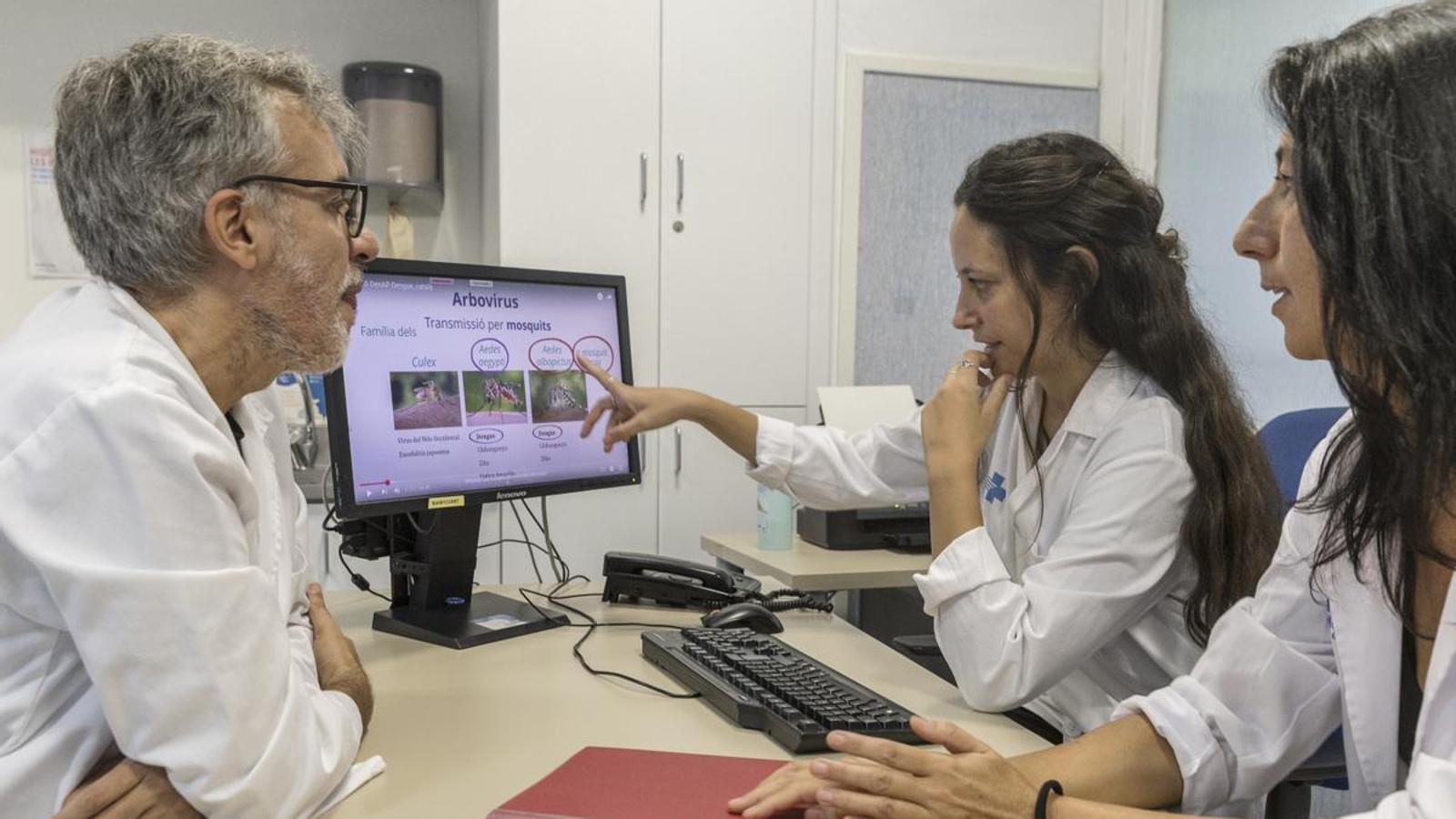Few cases of indigenous dengue: Are we the exception or did we fail to detect it?
Ten primary care centers are being trained to detect the disease early and prevent outbreaks like last year's in Vila-seca.

BarcelonaLast year, Europe recorded 306 cases of indigenous dengue fever, not related to travel to endemic areas. Italy led the list with 213 cases, followed by France with fewer than 100. Only eight cases were recorded in Spain, all in Catalonia, specifically in Vila-seca (Tarragona). where an outbreak was detected in early September.
This disparity in cases compared to the rest of European countries "leads to the suspicion that some cases of native dengue may have gone unnoticed in Catalonia and in the Spanish State, being a tropical and rare disease here," says Dr. Israel Molina, head of the tropical medicine and international health unit of the infectious diseases service.
For this reason, this summer the Vall d'Hebron University Hospital, together with primary care in Barcelona, launched the Den-Aut project, an innovative pilot test for the early detection of native dengue in primary care centers, coinciding with the start of the season of greatest activity of the tiger mosquito.
The test has been implemented in ten primary care centers in the city of Barcelona, to combat a disease transmitted by vectors - mainly mosquitoes - that caused the death of 7,713 people worldwide last year. Argentina, Brazil, Colombia, and Mexico accounted for 90% of cases and 88% of deaths in 2024.
As Marta Guerrero, a family doctor at the Manso Primary Care Center (CAC Manso), points out, among the most common symptoms of dengue are fever and at least two of the following: severe headache, discomfort behind the eyes, nausea, vomiting, skin rashes, muscle and joint pain, as well as one of the following illnesses: "Its symptoms are similar to those of the flu, which, added to the fact that the person has not traveled to a tropical area, makes the last suspicion that they have dengue," notes Dr. Guerrero. All of this can make diagnosis difficult, and for this reason, the Den-Aut project has been launched.
Broadly speaking, the pilot test consists of, in the case of a person who has not traveled and presents symptoms compatible with dengue, the CAC collects samples that are sent to the reference laboratory to determine whether or not there is an indigenous dengue infection.
One of the reasons for launching this network is that, unlike what happens when a person has traveled and suspects they may have been infected, patients with native dengue fever don't usually go to a specific center, but rather to the Primary Care Center (CAC). "It's very unlikely that the primary care physician who treats you suspects dengue fever. This makes us think that there have probably been cases of dengue fever in our area that we haven't diagnosed," notes Diana Pou, a doctor from the Vall d'Hebron International Health Unit.
Reduce mortality to less than 1%
For this reason, the project "is committed to specific training in dengue fever" so that primary care centers also consider it as a diagnostic possibility and can recognize its symptoms, quickly activating notification and vector control protocols to prevent new infections, Guerrero points out. So far, 500 healthcare professionals have been trained to more quickly identify the virus's symptoms, and the pilot test has been deployed in 10 Barcelona primary care centers: Manso, Adrià, Casco Antiguo, Doctor Luis Sayé, Roger, Sant Martí de Provençals, Trinitat Vella, Casanova, Comte Borrell, and Les Corts.
"Dengue fever is not a risk, it's a reality," notes Dr. Molina. Through this network project, which integrates different levels of care, the goal is to increase the capacity for early detection of the disease and prevent outbreaks like the one in Vila-seca in 2024 from spreading. Thanks to early diagnosis and appropriate medical management—including hospitalization when necessary, proper fluid management, and monitoring for possible complications—dengue mortality can be reduced to less than 1%.
In Catalonia, the first case of indigenous dengue was detected in 2018, followed by a second in 2019, while three confirmed cases were reported in 2023. This upward trend is part of the global increase in cases, which have increased tenfold worldwide since 2014. However, the distribution has not been uniform, with infections accelerating particularly in the last year and a half. This increase is closely linked to climatic phenomena, which have also had an impact in Catalonia, where rising temperatures and rainfall in recent years have favored "the virus remaining active for longer throughout the year and, in some parts of the country, it is even present year-round," notes Dr. Molina.
